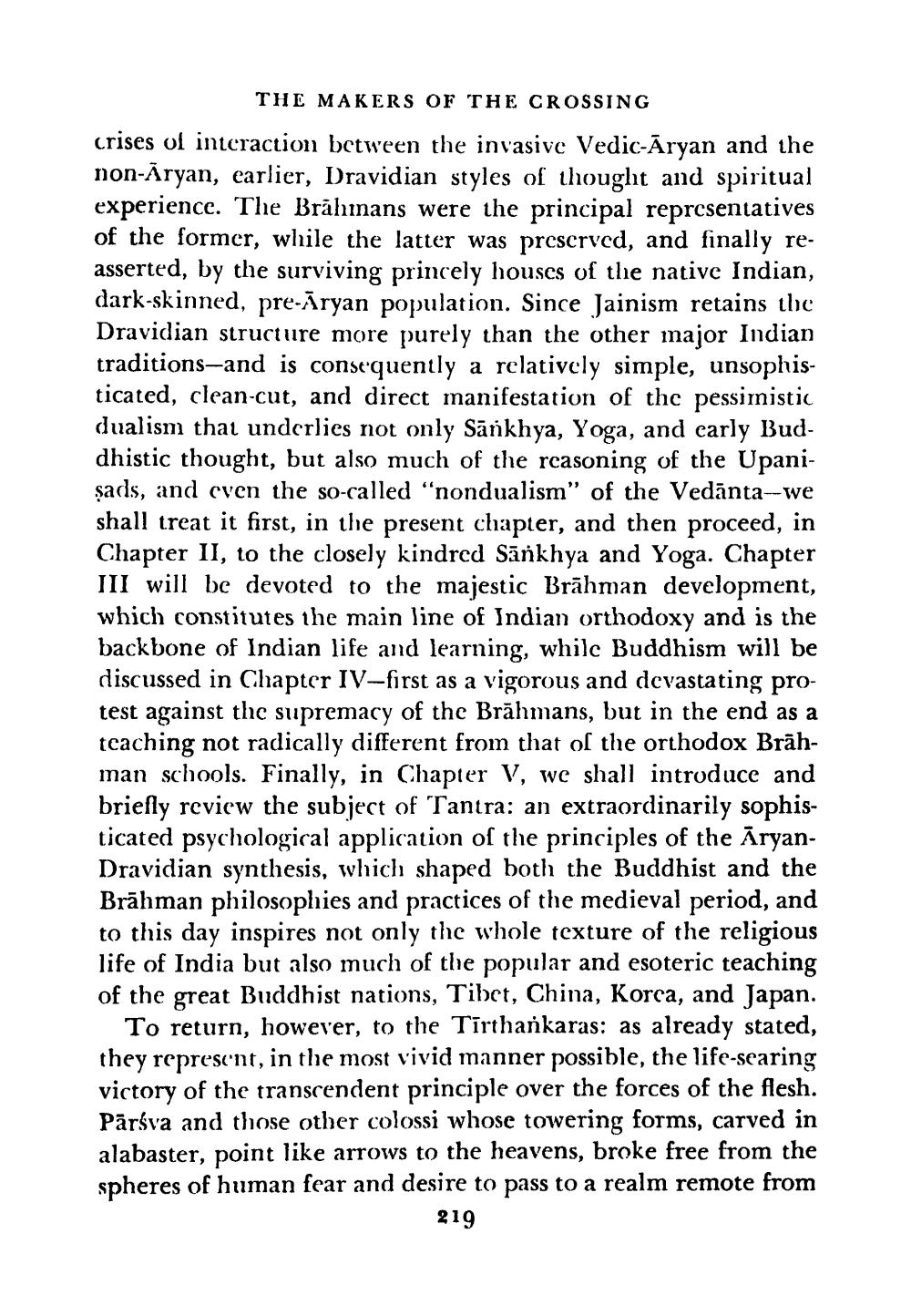________________
THE MAKERS OF THE CROSSING
crises of interaction between the invasive Vedic-Aryan and the non-Aryan, earlier, Dravidian styles of thought and spiritual experience. The Brahmans were the principal representatives of the former, while the latter was preserved, and finally reasserted, by the surviving princely houses of the native Indian, dark-skinned, pre-Aryan population. Since Jainism retains the Dravidian structure more purely than the other major Indian traditions-and is consequently a relatively simple, unsophisticated, clean-cut, and direct manifestation of the pessimistic dualism that underlies not only Sankhya, Yoga, and early Buddhistic thought, but also much of the reasoning of the Upanişads, and even the so-called "nondualism" of the Vedanta-we shall treat it first, in the present chapter, and then proceed, in Chapter II, to the closely kindred Sankhya and Yoga. Chapter III will be devoted to the majestic Brahman development, which constitutes the main line of Indian orthodoxy and is the backbone of Indian life and learning, while Buddhism will be discussed in Chapter IV-first as a vigorous and devastating protest against the supremacy of the Brahmans, but in the end as a teaching not radically different from that of the orthodox Brāhman schools. Finally, in Chapter V, we shall introduce and briefly review the subject of Tantra: an extraordinarily sophisticated psychological application of the principles of the AryanDravidian synthesis, which shaped both the Buddhist and the Brahman philosophies and practices of the medieval period, and to this day inspires not only the whole texture of the religious life of India but also much of the popular and esoteric teaching of the great Buddhist nations, Tibet, China, Korea, and Japan.
To return, however, to the Tīrthankaras: as already stated, they represent, in the most vivid manner possible, the life-searing victory of the transcendent principle over the forces of the flesh. Pārsva and those other colossi whose towering forms, carved in alabaster, point like arrows to the heavens, broke free from the spheres of human fear and desire to pass to a realm remote from
219




